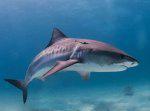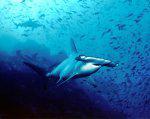Despite the fact that people are not found on the natural menu of any species of shark, shark attacks on humans still occur around the world. Shark attacks in 2010 have been said to hit record numbers, with 115 cases having been investigated by scientists around the world. A shocking 69% of these attacks have been confirmed to have been unprovoked.
However, out of the 360 different shark species found in ocean waters worldwide, only 3 are known to commonly attack humans. These are the Great White Shark (found in coastal waters worldwide), the Tiger Shark (found in warmer, tropical waters), and the Bull Shark (found in warmer, coastal waters). These three sharks are amongst the largest and most aggressive shark species in the world.
Even these sharks however, are rarely known to attack a person deliberately and it is commonly thought that they have mistaken the surfer for a seal or large fish, which are the main prey of a Great White Shark. Theseanimals normally linger towards the surface of the water where they can be watched unknowingly from the dark ocean below, by these enormous carnivores.
The shark will position itself below it's prey before attacking. to not only paralyse it, but also to check it out. Once the shark is sure that the object is food, it will then attack again. Sharks are not known to attack humans a second time however, indicating that they have no interest in eating us. Although, the injuries sustained from the first attack can often cause damage to vital organs.

Tiger Shark

Hammerhead Shark

